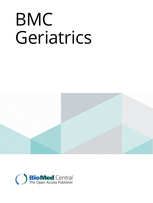Association between anemia, physical performance and cognitive function in Iranian elderly people: evidence from Bushehr Elderly Health (BEH) program
Authors
Affiliations
Abstract
Background and objectives: The present study aimed to investigate the relation between anemia and hemoglobin (Hgb) concentration, physical performance, and cognitive function in a large sample of Iranian elderly population.
Methods: Data were collected from Bushehr elderly health (BEH) program. A total of 3000 persons aged ≥60 years were selected through multistage random sampling. Hemoglobin values lower than 12 and 13 g/dL were considered as anemia for women and men, respectively. The cognitive function was measured using the Mini-cog test and Category fluency test (CFT), and the physical function was measured using handgrip strength (muscle strength), Relative handgrip strength (RHGS), and 4.57-m usual gait speed. Univariate and adjusted multivariate logistic regression and linear regression with Stata MP (version 15) were run, and a p-value of < 0.05 was used as statistically significant for all analyses.
Results: Among participants, 7.43% were anemic, and 115 (51.57%) simultaneously had anemia and cognitive disorder. There were significant associations between red blood cell count (RBC), hemoglobin (Hgb), platelet count (PLT), and hematocrit percentage (HCT) with cognitive impairment. Additionally, Hgb concentration was significantly associated with all physical measures (Mean handgrip, Relative handgrip, and usual gait speed) and late recall (mini-cog) among the whole participants. This association remained statistically significant after considering multi-cofounders. In contrast, after stratifying the participants by gender, the association between Hgb concentration and usual gait speed was decreased in both men and women; moreover, Hgb association with cognitive measures (category fluency test and late recall) was no longer significant (all p-values > 0.05).
Conclusion: There was a cross-sectional and significant association between anemia and functional variables (e.g., Relative and mean handgrip) in Iranian elderly population, whereas Semantic memory, Late recall, and walking were more affected by gender.
Keywords: Anemia; Cognition; Elderly; Handgrip; Hemoglobin; Physical; Walking speed.

